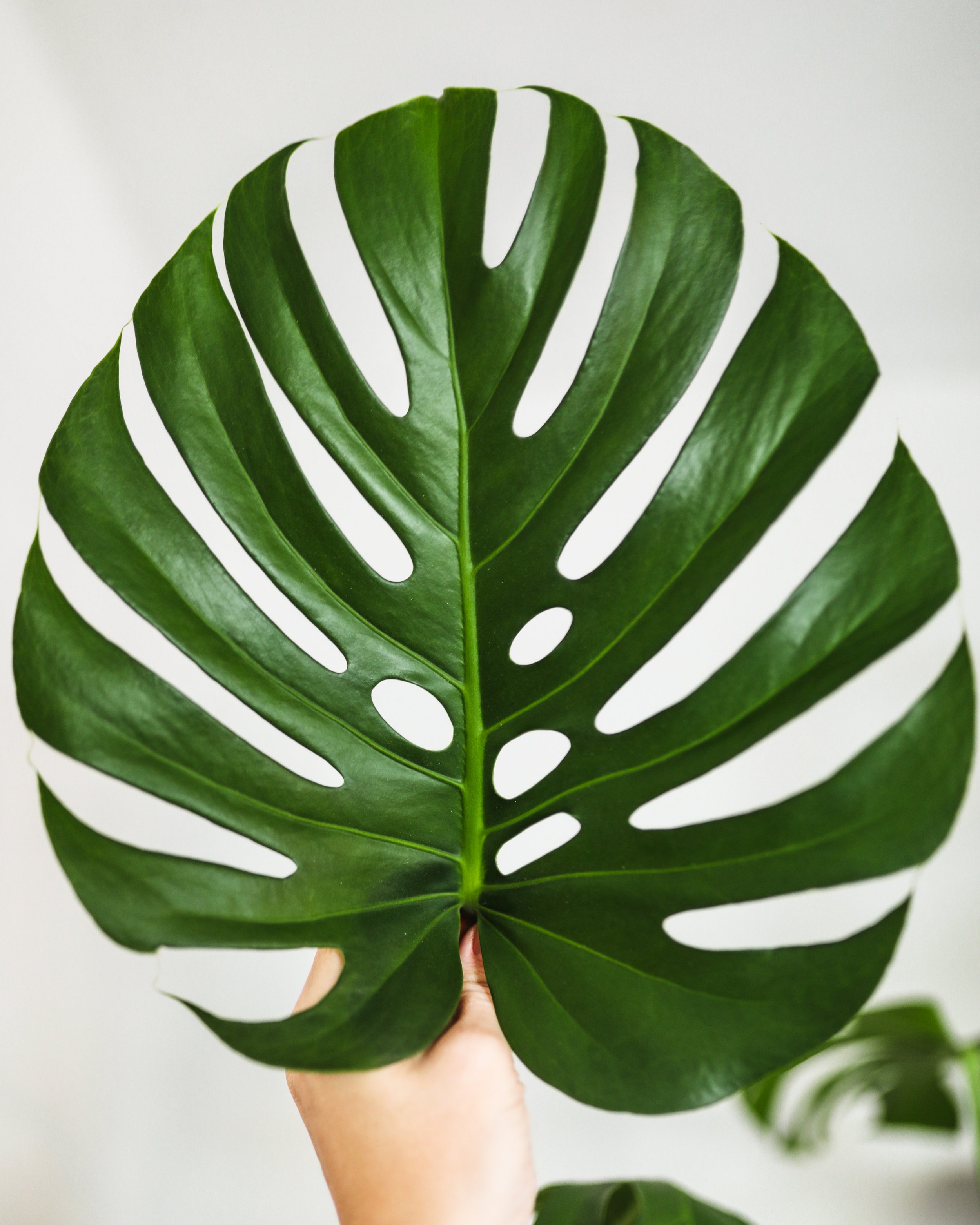Monstera Care and How to Get Holey Leaves
Fenestration: it is a funny word but also a very coveted plant feature in the houseplant world. Fenestration refers to the splits and holes found in the leaves of many plants, especially those of the popular Monstera genus. In fact, Monstera deliciosa and Monstera adansonii are often called Swiss Cheese Plants! But did you know there are ways to help your favorite holey plants get more holes?!
Why Holes?
So, why do these plants get holey? Most likely, these hemiepiphytes, having developed beneath the canopy in tropical rainforests, began developing holes in their leaves to increase the amount of light that is able to reach the rest of the plant. There are some who say that the holes also make the plants better able to withstand weather conditions in the tropics, or that the holes allow for more water to reach the plant’s roots. In indoor plants like Monstera deliciosa, fenestration can be used to tell how healthy and how old the plant is.
It might be surprising to learn that Monsteras are not the only plants that fenestrate, or split. Members of the Epipremnum genus, more commonly known as pothos, can also fenestrate under the right conditions. The common Golden Pothos can be seen with spits in its leaves when very mature and climbing. Some less common pothos varieties like Cebu Blue and Baltic Blue can look similar to Monsteras, though they often require specific growing conditions and a support to create those splits. Neat, huh?!
Monstera Care
When Monsteras are young, they look pretty similar to other plants in the Aroid family, like Philodendrons, Pothos, and Anthuriums. After about two years and in the right conditions, their leaves deviate from the other Aroids in that they begin to split. To make Monsteras extra holey early on, some cultivators will take cuttings from mature plants, ensuring that new growth will come out with more holes sooner. The fenestration process begins while the leaf is developing - once a leaf has emerged, it will not fenestrate further down the line. For this reason, it is important to give your Monstera all the right growing conditions and care if you want to see more holey leaves.
Light Exposure
Lighting is the most important factor that affects Monstera leaf development. In lower light, Monstera leaves will continue to stay whole or have few splits in them. In bright, indirect light, your Monstera will grow faster, larger, and fenestrate more! Ideally, place your Monstera in a window that is east- or south-facing. A west-facing window may do, though you will want to protect it from too much harsh direct afternoon sun. If your home is lacking in enough bright light to create those leaf splits, you can supplement your Monstera’s light by using a grow light or lamp.
Water & Media Type
In terms of watering, Monstera deliciosa tends to be rather forgiving. Allow the soil of your Monstera to dry out a bit between waterings. When you do water, be sure to thoroughly saturate the soil until water comes out the bottom of the pot. Depending on where you are keeping your Monstera, you should water every 1-2 weeks or so - in lower light areas, Monstera will use water more slowly than in brighter areas.
Because Monstera are aroids, they will prefer soil with great drainage and aeration. A fluffy soil mixture with perlite and orchid bark will ensure that their roots are drying out in between waterings. When their aerial roots grow long, you can tuck them back into the soil. It is a good idea to provide your Monstera with a stake or moss pole to grow on early on, as their stems and roots can become stiff with age.
Consistent and thorough watering is one of the main factors that encourages fenestration!
Fertilization
Monsteras can be fast growers when given plenty of bright light. For this reason, they will benefit from a general houseplant food once a month during the growing season (Spring-Summer). If your Monstera has been in the same pot for more than a year, fertilization is all that more important as the plant has likely absorbed any nutrients that was provided in the soil. In nature, the rain and forest floor provide nutrients, so we as plant parents must do our part to keep our plants happy and healthy. Take care to always follow the instructions provided with your fertilizer - over fertilizing can do much more harm than good when it comes to houseplants!
Temperature and Climate
Monsteras are pretty easy-going plants. For this reason, regular home temperatures and humidity should work just fine for your Monstera, given that the temperature is within the range of 65-85°F and the humidity doesn’t drop too far below 30%. In the winter, when our homes are generally drier, you can mist the aerial roots regularly, provide a pebble tray, or humidifier to boost the humidity.
Common Problems
One of the reasons that Monstera deliciosa is one of our favorite houseplants is its ease of care and because it isn’t super prone to pests. While common houseplant pests may occur, regular scouting and treatment will do for your Monstera.
With these tips, we hope that your Monstera will grow holey and healthy! Other than fenestration, what is your favorite unique characteristic to find in houseplants? Let us know on our Facebook or Instagram !

